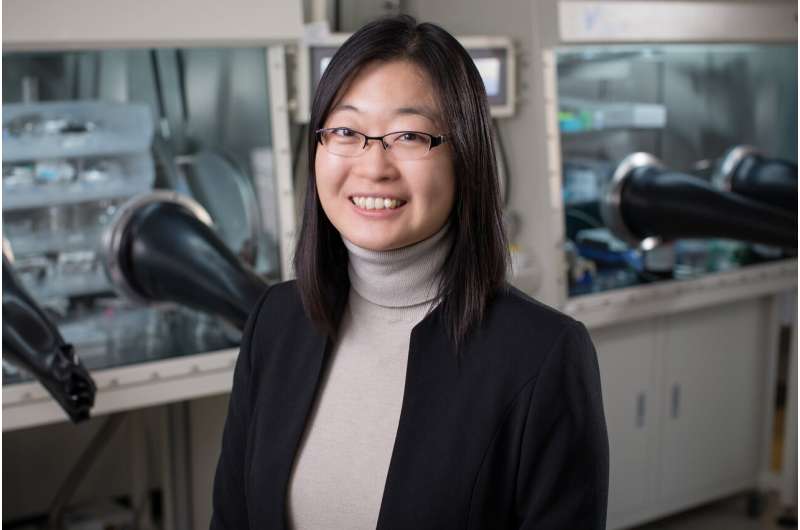Designing flexible and stretchable single crystal electronic systems

Researchers at the University of Illinois at Urbana-Champaign in collaboration with a Purdue team have discovered that certain crystals are more flexible and stretchable compared to current materials used for electronic applications. These new materials could therefore be used for making sensors and in robotics.
The study "Super‐ and Ferro‐elastic Organic Semiconductors for Ultraflexible Single Crystal Electronics" was published in Angewandte Chemie, the journal of the German Chemical Society.
Typically, silicon and germanium are used for making electronics. However, these materials are challenging to use on human skin or in robotics because they break apart when they are stretched too much. "Researchers use two ways to make stretchable electronics," said Ying Diao, an assistant professor of chemical and biomolecular engineering and a faculty member at the Beckman Institute for Advanced Science and Technology. "Either they carve intricate patterns out of silicon or they design new polymer materials. However, these approaches either involve complicated processes or they compromise the perfect order of the molecules."
To overcome this limitation, the Diao group looked for single crystal materials that could be stretched easily. The researchers were inspired by nature in their search. "This mechanism is found in a virus called the bacteriophage T4 virus. The tail of this virus is a single crystal of protein molecules and it is compressed over 60% when the virus injects its DNA into the bacteria. The compression occurs without losing structural integrity," Diao said.
"We discovered that bis(triisopropylsilylethynyl)pentacene crystals can be stretched over 10%, which is ten-fold that of the elastic limit of most single crystals." said Sang Kyu Park, a postdoctoral researcher in the Diao group.
"The molecules in the single crystals can cooperatively glide and rotate to accommodate mechanical strain beyond their elastic limit." said Hong Sun, a graduate student in the Kejie Zhao group at Purdue University.
"This mechanism also is found in shape memory alloys that are available in retail stores," Park said. "You can distort the wire and then restore it back into its original shape by heating it. However, we are the first to discover this phenomenon in organic electronic crystals."
More information: Sang Kyu Park et al, Super‐ and Ferro‐elastic Organic Semiconductors for Ultraflexible Single Crystal Electronics, Angewandte Chemie International Edition (2020). DOI: 10.1002/anie.202004083
Journal information: Angewandte Chemie , Angewandte Chemie International Edition





















